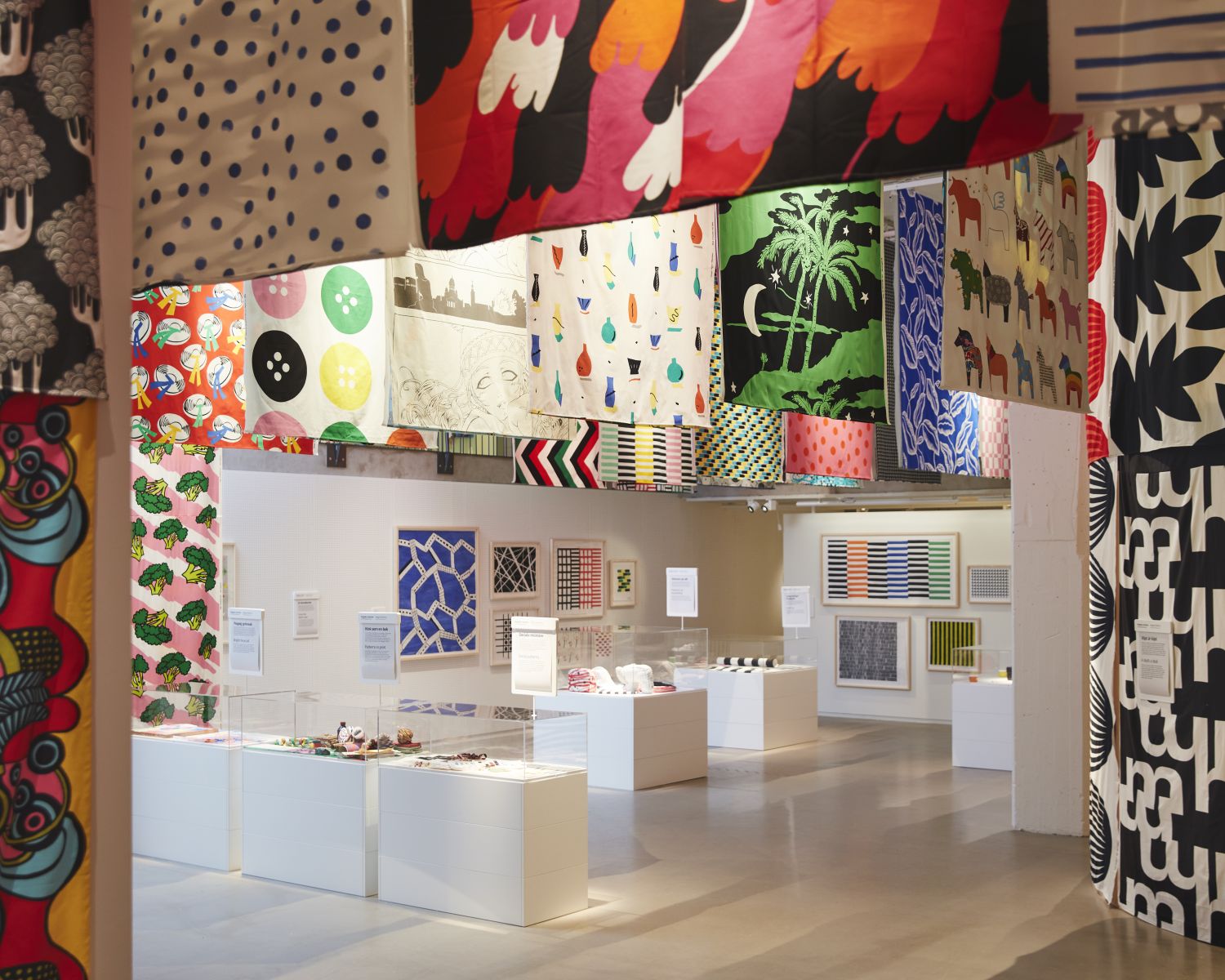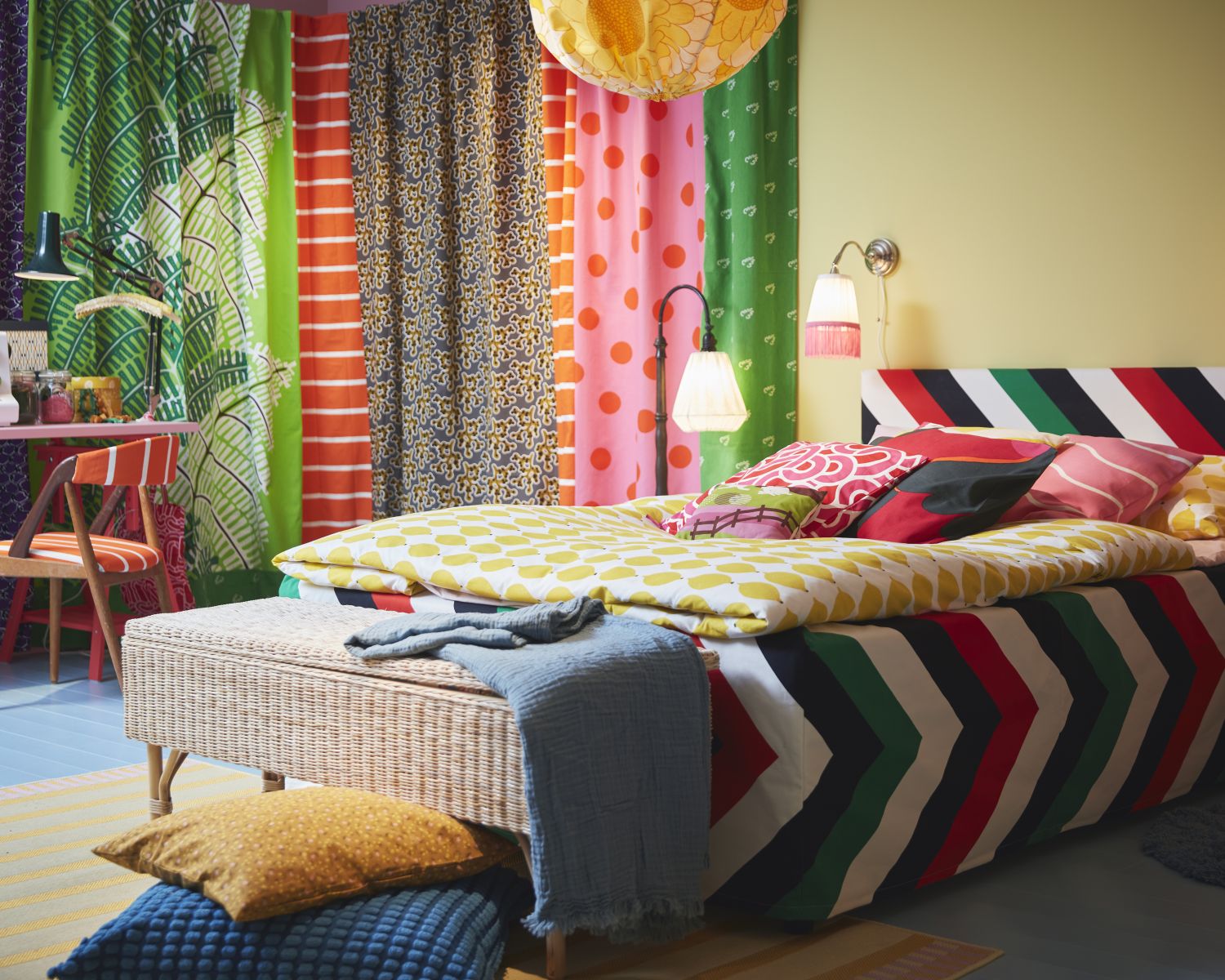Heather Carroll on IKEA: Magical Patterns – 'This is design for the people'
The vibrant, affordable fabrics of Swedish retail giant IKEA are celebrated in a new exhibition marking 60 years of their iconic designs. Rachel Morrell learns about the company’s creative process, its pioneering use of women designers, and how visitors can even make their own patterns

A household name is coming to Edinburgh this festival season. But it’s not a person. The distinctive textiles of IKEA will be on show at Dovecot Studios to mark six decades of the Swedish brand’s designs, acknowledging both the artists that influenced the company’s identity and the innovative and experimental products they’ve created along the way.
Magical Patterns is a collaboration with the IKEA Museum, as Heather Carroll, Dovecot’s exhibitions manager and curator, explains: ‘this is a unique opportunity for us to work with a branded museum who are experts in their field and have this access to an amazing archive, very much within that textile world. We took on this exhibit with the motive of giving our visitors a greater appreciation of textiles in general, and to highlight the connection between textiles and our daily life.’
With 180 pieces on show, and styles ranging from graphic modern to nature, storytelling to fantasy, there are fabrics for all tastes. ‘Quite bold yet egalitarian, this is design for the people which gives us a greater appreciation for designers,’ says Carroll. ‘They have to create patterns which will appeal to a wide range of people and places, who will be living surrounded by them: for instance, a black and white stripe that looks just as good in a house with only red sofas as it does in a brimming maximalist’s house.’
 Exploring whimsy and motif throughout, Magical Patterns (curated by IKEA Museum’s Anna Sandberg Falk) highlights the work of artists from around the world. From the classic minimalism of Tom Dixon to the punk textiles of Zandra Rhodes, this is an exciting look behind the curtain at the methods used to generate these designs. ‘One of the things that was so interesting was seeing the process,’ says Carroll. ‘A lot of designers decide against using computers to make their work, so it was fascinating to understand how they use alternative methods to create these patterns, with strips of paper or cloth. One uses a bead board to come up with their patterns. There is almost a ritualistic aspect to the creation process.’
Exploring whimsy and motif throughout, Magical Patterns (curated by IKEA Museum’s Anna Sandberg Falk) highlights the work of artists from around the world. From the classic minimalism of Tom Dixon to the punk textiles of Zandra Rhodes, this is an exciting look behind the curtain at the methods used to generate these designs. ‘One of the things that was so interesting was seeing the process,’ says Carroll. ‘A lot of designers decide against using computers to make their work, so it was fascinating to understand how they use alternative methods to create these patterns, with strips of paper or cloth. One uses a bead board to come up with their patterns. There is almost a ritualistic aspect to the creation process.’
In a profession increasingly threatened by modern technology, it seems like a perfect time to pay homage to human endeavour, speaking to the history and ethos at the heart of this Swedish retail giant. ‘The idea for IKEA grew from a door-to-door salesman to a huge enterprise. Ingvar Kamprad recognised the need for textile designers and employed mostly women at a time in the 1960s when that would not have been the norm,’ says Carroll. ‘But he put them in management roles and understood the value of their creativity, collaborating with each other and being influenced by the world. One of the most recognisable IKEA patterns was inspired by the designer listening to the radio, hearing the phrase “cool bananas,” and voila! The Randig Banan was born.’
In this spirit of imagination, visitors are invited to get into ‘pattern mode’ in the exhibition’s pop-up design studio, which welcomes them into an immersive environment of vibrant colour. With decades of inspiration from legendary designers, such as Marimekko and Inger Nilsson, and events being held with curators, the exhibition is the perfect opportunity to delve into the world of experimental design (without going on an accidental shopping spree).
IKEA: Magical Patterns, Dovecot Studios, 18 July–17 January.